
Hiking the Appalachian Trail for Beginners (Complete Guide)
Hiking comes with a lot of physical and mental benefits. The low-impact workout will help you get better shape, reduce stress, and improve brain power.
When I started hiking ten years ago, I realized that I lost 30 pounds and built self-confidence within a month. It was the beginning of my relationship with outdoor activities across the country.
My love for adventure happens to be the reason behind the desire to explore Appalachian trails. I have heard so many stories about the terrain, and this stimulates me more.
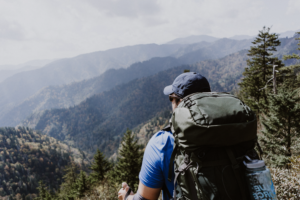
My first trip to Appalachian trails was unsuccessful. I was unable to make it all the way. The second attempt was very successful after doing more research and carrying all the necessities.
It is the reason I wanted to share with you these hiking tips in the Appalachian trails and all things you may need during backpacking.
This article also provides ideas to prepare for a week-long Appalachian trail hike and what to expect in the long run. Take the time to read through it and prepare both mentally and physically.
21 Unique Tips for Hiking in Appalachian Trail for Beginners:
Completing a thru-hike is the most rewarding achievement for beginners. But undertaking this mammoth trip is both an exciting and daunting experience.
Below are quick hiking tips to consider before going for an Appalachian trail hike:
1. Do Thorough Research
The Appalachian trail is super unique when compared to the backpacking trips. Preparation and gears for hiking are not the same.
New hikers need to come with light equipment and learn trail skills before getting set for the trip. The trail has a lot of logistical challenges that need thorough preparations.
The best option is reading a bunch of helpful resources about the terrain. The information will help you figure out how to overcome the challenges.
2. Know the Pitfalls
The bitter truth is that many new hikers never make it through Appalachian trails. But if you are looking to come out successful, determination and belief are important.
We recommend setting realistic expectations since the trail is not an easy stroll. Develop mechanics of overcoming physical and mental fatigue.
Besides that, budgeting your financial resources and managing time will be crucial. It can be depressing when you run out of time and money along the way.
Undertake early training, preparations, and daily stretches to make you strong. It is the only way to withstand stress on muscles, joints, and bones during the stroll.
3. Set Realistic Goals
Always define your success and go get it. This is achievable by setting more realistic goals. Many new hikers are usually excited about the trip and end up setting unrealistic goals.
Failure to achieve can be depressing to others. But being specific helps to make a decision faster and remain focused on the set milestone.
The journey through the Appalachian trails is long and tiresome. Try to be honest with yourself and define success according to your understanding.
4. Get Gear Weight Down
Appalachian trail hiking is different from the conventional backpacking trip. Trekking for a long-distance with heavyweight gears is tedious and cumbersome.
The thru-hike trail is about efficiency and not brute strength. Less backpack weight will enable you to be efficient to cover long miles without feeling stressed and fatigued.
Pack essential supplies and try to avoid luxury equipment. It is the best option of ditching several pounds and going, lightweight.
5. Get Your Mindset Ready
If you are planning to go through Appalachian trails this year, prioritize it. Giving the trip number one focus will help you prepare both physically and mentally.
Learn to sacrifice for hiking in terms of finance and time. It is the only option that will make you successful in the long run.
6. Improve through Practice
Hiking in the Appalachian trails is not for the faint-hearted people. It is for individuals with the best hiking shape and experience.
Getting this hiking shape and experience is through practice. Start with simple backpacking trips and get used to the hiking gears.
The training will help you prepare mentally and physically for the long-distance trails. Improving your fitness and confidence is crucial for success.
7. Have Adequate Funds
Adequate funds are crucial for a successful trek in the trails. You will need money for your meals and hotel for the rest days.
You need to plan and budget your money. The journey through Appalachian trails can drain your wallet if not prepared.
You might also need money for hiking gear repair and food resupply. The average amount to spend per month while on the trip depends on your hiking style.
8. Arrange Social Support
Thousands of hikers go through Appalachian trails every month. It implies that you are likely to make new friends throughout the journey.
But feeling homesick and lonely is normal. Getting in touch with your loved ones through postcards and care packages will make an incredible impact.
Call your family and friends to let them know your next location. This is the perfect decision since they can send you a small food package.
9. Go Easy on Re-Supply
New hikers usually fail to persevere with a little amount of food. Some end up resupplying with too many foods on the way. It results in a waste of money and time.
Most business people along the Appalachian trails usually stock up during the season. Shipping foodstuffs to these towns is super expensive.
The best option is resupplying the necessary kinds of stuff only. This will help to save on money and time throughout the trip.
10. Avoid Pressure from Hiking Communities
There are a lot of stories about hiking in Appalachian trails. Some of these stories can put pressure on you before trying it out.
Keep in mind that everyone has their hiking styles and standards. Try to focus on what is best for you and this will relieve pressure over your shoulders.
11. Get a Hiking Partner
Hiking with your spouse or close friend makes the trip through the Appalachian trails interesting and exciting. Keep in mind that daily stresses along the way for 5-6 months are inevitable.
The best option is to give your partner space and ensure they come with separate hiking gears. The support and respect will make your journey successful.
If you love going solo, try to make friends along the way. Hiking in Appalachian trails usually has strong social scenes since most hikers travel on the same schedule.
12. Consider Regular Stretching
Physical stress injuries are common in the Appalachian trails. But considering regular stretching through the trails will help to avoid stress injuries.
New hikers usually neglect the exercise routine and end up suffering from hamstring along the way. Keep up the stretching routine despite the tiredness.
13. Listen to Your Body
Building up daily mileage and pacing yourself help to make the legs stronger. The body will tell you when to rest or go slower.
Learn to listen to your body by slowing down and taking a rest. It is the perfect option for avoiding physical and mental fatigue.
Pushing yourself to a certain limit while in the trails is normal. But going harder would cause more pain and the chances of quitting become high.
14. Take Care of Your Feet
Feet are crucial body parts during the Appalachian trail trips. These parts will enable you to go through any trails up to the finish line.
Taking ultimate care of your feet will make you a champion. Consider wearing lightweight shoes, synthetic socks, and running gaiters.
These gears will allow your toes to breathe and minimize the chances of getting blisters. The lightweight shoes are another incredible way of keeping the weight down.
15. Focus on Realistic Pace
Appalachian trail hiking is not a race. If you have decided to set a speed limit, hiking will automatically become a race.
Going through the trails takes months and taking the trip like a race might be a good thing. Focus on the pace that suits your body and hiking style.
Keep in mind that anybody that makes it through the Appalachian trail is a winner. We recommend taking time to enjoy your tour and exploration on the trails.
16. Have a Flexible Schedule
The Appalachian trails have a lot of challenges. The chances of sticking to a fixed schedule are almost zero. Try to make your schedule flexible as you track your pace in the trails.
The flexibility will help you have peace of mind and enjoy the trip. It is impossible to know the exact place to be on the trails in advance.
17. Learn to Love Hiking
The trail has several climbs and downhills. But if you love backpacking trips, let this one not be a bother in the long run.
Enjoy your hiking experience despite the tough stretches along the way. It is the best option to boost your morale during the ups and downs on the trails.
18.Prepare for Mental Fatigue
Going through the Appalachian trails is a mental battle. The journey will improve your legs and body endurance level.
Keep in mind that you are going to wander in the trails for 5-6 months. Try to keep your head up despite the numerous challenges in the woods.
We recommend taking photos, listening to music, and reading for mental breaks. However, everyone has a unique way of dealing with mental breaks.
19. Develop Positive Mental Attitude
The key to success through Appalachian trails is a positive mental attitude. Learn how to foster positivity in everything despite the ups and downs.
The incredible mental toughness and commitment will make the trip via the trail smoother. Endurance and positivity are crucial mental attitudes to consider.
20. Have Dedication and Commitment
Hiking in Appalachian trails is not a walk in the park. You need adequate time, preparation, and dedication to complete the trip successfully.
The backpacking trip may sound challenging, but a fully prepared and committed person is likely to become a winner. Keep in mind that focus and hard work is paramount.
21. Get Out and Start the Journey
Procrastination is the killer of many dreams. Many new hikers spend a lot of time reading resources to get set for the journey. Some information can be enticing and misleading.
The rule of thumb is to get out and start the trip. You will make some blunders at the beginning, and you will quickly learn from them.
Body adoption and confidence in every step are crucial among hikers. The Appalachian Trail is a tough and challenging trip. Get ready and hit the road.
When to Start Hiking the Appalachian Trail?
Many backpacking hikers prefer starting their trip in March or the first two weeks of April. The journey usually commences at Springer Mountain in Georgia and ends at Katahdin in Maine in September.
March is marked by winter weather. Hikers need to carry high-quality winter gear to withstand the snow and wet conditions in the Appalachian trails.
Mid-April to May is a spring season. The weather is usually favorable and ideal to enjoy the green scenery on the way.
Keep in mind that you will experience very hot and humid temperatures while in the mid-Atlantic states. The favorable conditions through southern New England with cold weather in Maine mark the end of the trip.
But every hiker is required to register at Appalachian Trail Camp before starting the journey to receive crucial updates. It is the best point for traveling in a crowd.
If you hate hiking in a crowd and winter conditions, consider going through the trails between mid-April and the first week of May. But plan to reach the finish line before 15th October.
Always put into consideration weather conditions before starting the trip through Appalachian trails. Every part of the area usually receives snowfall through the first weeks of April.
If you commence the trip in February, you are likely to hike in colder temperatures and deeper snow for a long period. The extreme weather condition is ideal for experienced backpacking hikers.
What to Pack When Hiking the Appalachian Trail?
Small and light are crucial for thru-hikers. Keep in mind that thru-hikers spend less time in the camps when compared to backpackers.
Get hiking gears that are compatible with your skills, fitness level, experience, and health conditions. It is the best way to complete the Appalachian trails without facing challenges.
Lightweight gears are ideal for those individuals who know how to use them. Besides that, it makes you feel more efficient and comfortable throughout the challenging terrains.
Below are some of the major items to carry during the Appalachian trail trip:
Backpack

The backpack is the last item to buy for your trip. Get a high-quality material backpack that can tolerate abrasion in the trails and fit your back comfortably.
Pack all the essential items inside it. Ensure you do not exceed the required pounds since traveling light is more efficient. Ensure the bag is waterproof and has a pack liner since rain is inevitable.
Shelter
Appalachian trails are woodlands with rocky, Rooty, and rugged terrain. Going for a hammock shelter is the perfect option over a tent.
Consider a shelter that is lightweight, durable, easy to set up, and can withstand the storm. The shelter is a crucial item while trekking in the Appalachian trails.
Sleeping Bag
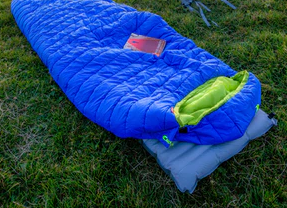
The weather condition in the trails ranges from freezing to Atlantic hot and humid. Buy two models of sleeping bags that will suit winter and summer weather.
Ensure the sleeping bags weigh less than two pounds. But these gears need to provide ultimate warmth and comfort at night.
Sleeping Pad
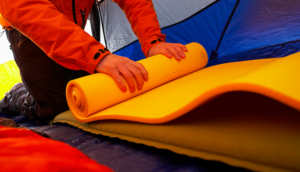
Appalachian trails are rich in hardwood and rugged terrains. A high-quality sleeping pad should guarantee comfort in the shelter.
Purchase a kid’s size sleeping pad to cut down on the weight load. It is usually affordable and easy to carry throughout the trip.
Light Puffy Jackets

A lightweight puffy jacket is another crucial item to carry. The jacket will help you manage extreme temperatures regardless of your hiking style.
The weather conditions in the Appalachian trail are wet and snowy. This jacket will help to provide warmth to battle the terrain without facing challenges.
Raingear

Rain is a common phenomenon throughout the AT. The wetness and snow can be overwhelming to some hikers. Managing the wet conditions and overheating on the steeps is crucial.
Add rain gear to your backpack before starting the journey. It will help bring the balance between moisture and warm weather conditions.
Undergarments
Pack extra pairs of undergarments. Ensure the material can dry faster after washing to avoid mold growth on it. Use long underwear as sleep clothes during cold weather conditions.
Hiking Shoes
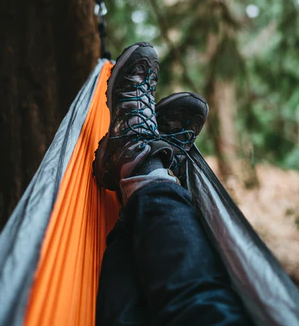
The journey through AT is both an exciting and daunting experience. The long trip increases the chances of developing foot blisters regardless of the shoe type.
We recommend buying mesh trail runners. The shoe holds less water and allows toes to breathe with ultimate comfort. Consider lightweight shoes to reduce the weight load in the backpack.
Extra Socks

The Appalachian trail is full of snow, mud, and puddles. Walking in such an environment will make your feet wet throughout the trip.
Consider high-quality socks that can withstand wetness and long mileage. These gears also help to protect the feet from blisters caused by friction.
Bug Management Effects

The Appalachian Trail makes hikers sweaty most of the time. It is the reason why many hikers hate wearing long sleeves and pants since it is uncomfortable.
The forest is full of mosquitoes, ticks, and black flies. These insects are known for causing diseases that make some hikers quit. Carry bug sprays and lotions to manage these creatures during the trip.
Food Supplies

Food is Essential during hiking. It helps to provide energy and enhance survival through the long AT journey. Carry non-perishable foodstuffs that can serve you for a couple of days.
But you will meet business people along the Appalachian trails to resupply more foods. Avoid buying unnecessary snacks.
Light and Water Filter
AT entails night hiking. You need to carry a waterproof headlamp that is bright to provide light while bathing and cooking in the camp.
A water filter will help to avoid waterborne diseases. It helps to filter out germs when using water from the forest streams.
Stove and Cook Kit
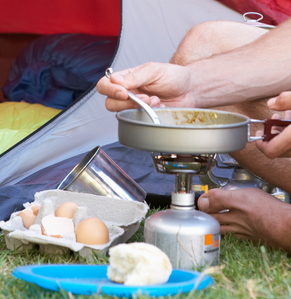
Carrying a lightweight stove throughout the trip is crucial. The gadget helps to warm food and also provides warmth during cold weather.
First Aid Kit

Carry a fully equipped first aid kit since the long trip is challenging. The medicines will help to relieve stomach issues, pains, fevers, and allergies. A whistle is essential for an emergency signal.
We hope these backpacking preparations and hiking tips were helpful. Share your views and suggestions from the guide that works best for you in the comment section.
Remember the Appalachian trail has several bugs that can cause illness. Ensure your first aid kit is well-equipped to handle Lyme disease-carrying bugs and malaria from mosquitoes.
Keep in mind that the long mileage trip will drain you physically and mentally. Keep your head up despite the challenges on the way until you complete the journey.












